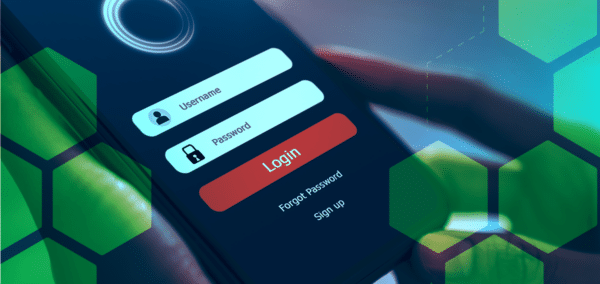User engagement goes beyond simple usage metrics—it refers to the active participation, interaction, and connection that users have with a service or platform. As technology evolves and user demands change, understanding and optimizing user engagement will remain crucial for businesses aiming to stand out in a competitive landscape.
From watching videos to posting comments to making purchases, engaged users interact with numerous features and functionalities. Tracking these actions gives companies insights into user behavior, preferences, and satisfaction levels—and with those insights, companies can tailor their offerings to better meet user needs.
What is User Engagement Really Measuring?
User engagement measures the depth and quality of a user’s involvement with an app or service, making it an especially meaningful metric for any business. It considers more than just app downloads or signups—it looks at precisely what users are doing, what actions they are taking, and how they are interacting with an app or video streaming service. High user engagement is often correlated with user satisfaction, loyalty, and increased conversion rates. High levels of engagement indicate that users are deriving value from the platform, while low engagement can suggest disinterest or dissatisfaction. User engagement serves as a measurement of the overall health and effectiveness of an app or service in capturing and retaining user interest.
In a crowded digital landscape, with countless apps vying for attention, user engagement strategies are an essential tool for fostering a loyal user base.
Key Components of User Engagement
There are many factors that influence user engagement, each playing a crucial role. For example, the frequency of app usage and the duration of each session reflect the level of user interest and satisfaction. The depth of interactions, such as the number of clicks or the number of features used, signifies interest in a platform’s content. Collectively, these factors provide a picture of the extent and quality of user involvement. Understanding each of these factors can help a company discover ways to increase user engagement. Examples include:
- Frequency: The frequency with which users engage with an app or platform, measured by metrics such as new sessions and page views.
- Duration: The amount of time users spend consuming content or performing actions within a platform. Longer session times tend to indicate more satisfied and invested users.
- Content Consumption: This includes activities such as watching videos, reading articles, or interacting with other media formats available on the platform.
- Depth of Interactions: Button clicks, purchases, likes, and shares all reflect user interaction and contribute to deeper engagement.
- Conversion Rates: The percentage of engaged users who take desired actions, such as making purchases or leaving positive reviews, reflects the effectiveness of a platform’s user engagement strategy.
- Personalization and Relevancy: Crafting tailored experiences aligned with user preferences and interests boosts engagement by providing content and experiences that users find most meaningful. Each of these factors offers some insights into user behaviors and user satisfaction levels. For example, if users drop off after short sessions, it may indicate issues with content relevance or usability. And analyzing retention data enables companies to identify factors that contribute to user churn. By delivering personalized and relevant experiences, companies can create deeper connections with their users. Consider the many platforms now offering annual recaps of an individual user’s activity as an example. Designed to be shared, these drive loyalty and retention.
Why User Engagement Matters
User engagement can make or break a platform. A high level of user engagement is crucial for achieving long-term success and establishing an app as a go-to destination in the eyes of users. An engaged user is more likely to share with their friends, leave positive reviews, and help drive organic growth. Companies can maintain a competitive edge by fostering customer retention—and reducing the likelihood of users exploring other apps. Brand loyalty contributes immensely to the success of digital platforms.
- Brand Loyalty: When users develop a sense of loyalty to an app, it leads to positive word-of-mouth marketing and higher retention rates. Engaged users return regularly and recommend the platform to others.
- Competitive Edge: Establishing a unique market position is essential to standing out in a sea of competition. Satisfied users are less likely to explore other apps, which results in a stable user base.
- Improved Retention Rates: Engaged users offer a number of benefits, including reduced need for user acquisition efforts. High retention rates indicate high user satisfaction.
- Adaptation to User Preferences: Evolving effectively as user preferences change keeps platforms competitive in a rapidly changing digital environment.
How to Increase User Engagement
Companies looking to improve user engagement will need a multi-pronged approach. Increasing user engagement requires a combination of reliable system performance, thoughtful design, and ongoing optimization. By implementing a strategy that bolsters all of these elements, digital platforms can create a more immersive and personalized experience for users—and keep them coming back again and again.
Strategies to improve user engagement include:
1. Personalized User Experience
Implementing personalization features based on user data enhances an app’s relevance and keeps users interested. Customized content, recommendations, or notifications improve the overall user experience.
2. Intuitive User Interface (UI) Design
Creating an intuitive and visually appealing UI improves navigation, helping users to explore more easily and discover new content without friction.
3. Optimized Video Streaming
High-quality video streaming with minimal buffering provides a seamless viewing experience and increases the likelihood of return visits.
4. Data Analytics and Iteration
Using data analytics to track and trend user behavior, preferences, and engagement uncovers patterns and insights and makes data-driven decisions possible. An iterative process allows for continuous improvement.
Assessing User Engagement With Experience-Centric Operations
Product Analytics tools can provide important insights into a user’s journey and experience, which aggregates over time into an actionable understanding of engagement. Observability tools can provide insight into the performance of the technical systems that impact user engagement. But traditional observability measures only technical metrics, such as latency rate or network downtime, leaving companies with key blind spots. While Product Analytics tools only measure high level user engagement, and provide very little root cause analysis to determine why a user’s engagement might have dropped. Neither solution provides full visibility into what the user is experiencing and what technical aspects of their application are contributing to that user’s experienceHaving an incomplete picture can waste valuable time and resources, as teams may have to try repeatedly to identify and fix problems. Knowing what’s happening is obviously important, but knowing why it’s happening is what it takes to identify the solution. Addressing issues that impact users, and adapting in real time, requires more sophisticated tools than traditional observability can provide.
Conviva’s Experience-Centric Operations platform gives organizations the complete picture they need to capture—and maximize—user engagement. Our Operational Data Platform utilizes experience-centric operations to tell teams exactly what is happening, when it’s happening, and why it’s happening—all in a matter of seconds. In fact, Conviva can compute this data 10 times faster than any existing technology, and at a fraction of the cost. It scales to handle 5 TiB of traffic volume and 4.5 billion events per hour.
With the Operational Data Platform, companies can have immediate insight into what is affecting engagement, either positively or negatively. Teams can quickly identify the root cause behind any issues and resolve them before they impact users’ experience and engagement with the platform. Our AI Alerts continuously scan 450,000 cohorts and analyze 120 billion metrics per hour to identify anomalies and trigger alerts.
With Conviva’s platform, you can monitor every touchpoint in your users’ journey—from how long it takes a user to sign up to how long users may have to deal with buffering issues. Armed with in-depth, real-time insights, you can give your users the best possible experience. By understanding and optimizing user engagement, organizations can unlock new opportunities for innovation, growth, and differentiation.
Gain In-Depth Insights into User Engagement with Conviva
User engagement is a complex but critical metric that captures the depth and quality of a user’s interaction with a digital platform. Understanding how users interact with an app or service helps organizations identify areas for improvement, optimize features, and deliver experiences that resonate with their audience. Implementing effective user engagement strategies helps organizations foster brand loyalty, drive customer retention, and achieve long-term success. Analyzing user behaviors and preferences and incorporating feedback demonstrate a user-centric approach. Taking such a proactive approach to meeting user demands can shape consumer perceptions and lead to higher retention rates.
In a crowded competitive landscape where users have seemingly endless choices, it’s imperative for businesses to prioritize user engagement and invest in the overall user experience.
Organizations wondering how to measure user engagement are ready to move beyond traditional observability tools. While traditional observability tools provide valuable insights into technical metrics, they fall short when it comes to capturing the full spectrum of user engagement. User engagement is a more multifaceted metric than technical measurements alone can convey.
Users today have countless choices for where they spend their time and attention; any platform that wants to capture and retain user interest has to connect with their audience. User engagement serves as a barometer of the effectiveness of a platform. Conviva’s revolutionary experience-centric approach provides comprehensive monitoring and allows for continuous enhancement of user engagement. With Conviva, organizations can gain immediate insight into what drives user engagement, identify areas of improvement, and solve problems before they impact the user experience. By meeting users’ ever-changing demands, organizations can position themselves as industry leaders delivering the go-to experience in their space.





